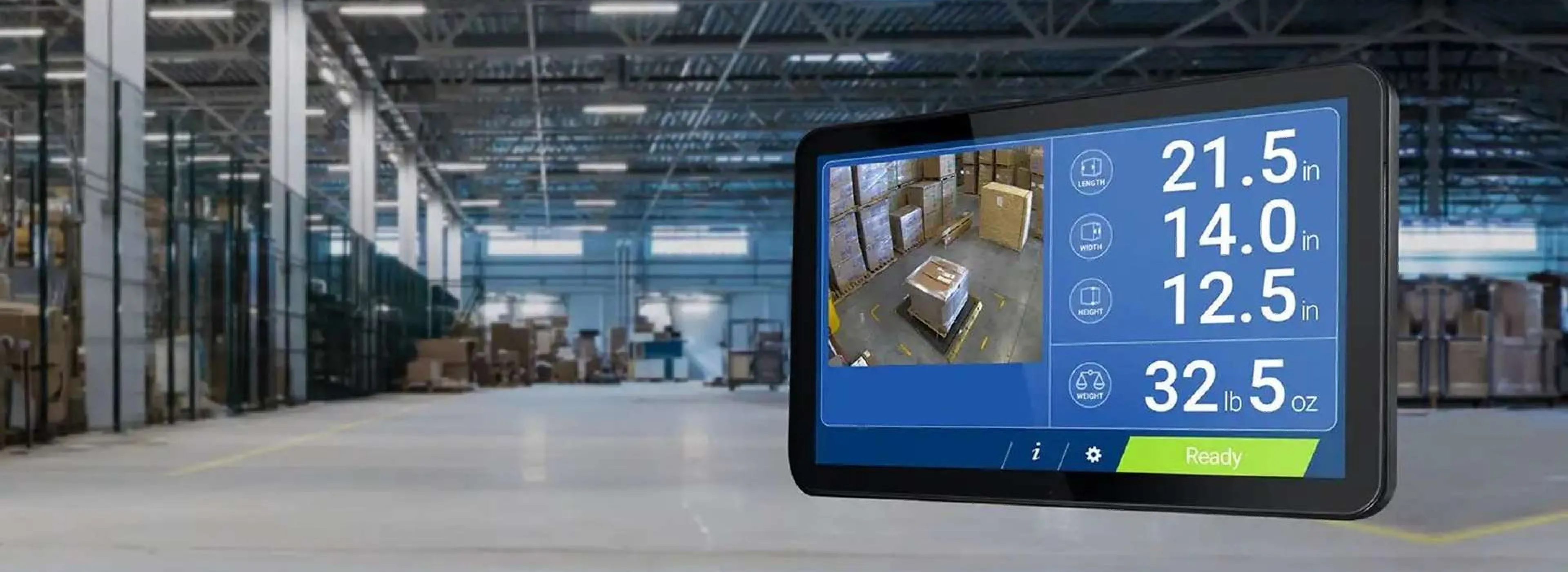For more information about optimizing warehouse operations or the latest warehouse technology trends, you can follow us on LinkedIn, YouTube, X, or Facebook. If you have other inquiries or suggestions, please contact us here. We’ll be happy to hear from you.
Inefficient warehouse operations cost your business time, money, and customers. But a well-run warehouse becomes a competitive advantage. From inventory management to order fulfillment, every aspect of the warehouse must be optimized for smooth and seamless processes.
Click Here: Optimize Your Warehouse With This Advanced and Affordable WMS
This blog will cover the basics of warehouse operations, from its definition, importance, common challenges, and key principles to efficiency. We will also discuss strategies to optimize warehouse layout, inventory management, staff training, and the technologies you should have.
What is Warehouse Operations?
Warehouse operations are the various activities and processes that aim to maintain inventory accuracy, optimize storage space, ensure timely order fulfillment, and minimize operational costs. Warehouses play a crucial role in businesses’ supply chain and logistics, serving as storage and distribution points for goods and products before they reach the end consumers.

To learn more about the different types of warehouses, we made two articles. Click here for Part 1 and Part 2.
Functions and Processes of Warehouse Operations
Here are some of the components that comprise warehouse operations.
1. Inventory Management
This involves tracking the quantities and locations of various products within the warehouse. Inventory management ensures that products are available when needed, helps prevent stockouts or overstocking, and supports accurate order fulfillment.
2. Receiving
Incoming goods are received, inspected, and logged into the warehouse system. This process involves checking for discrepancies between received items and purchase orders and addressing damages or quality issues.
3. Storage
Goods are organized and stored within the warehouse based on factors like SKU (stock-keeping unit), size, weight, and demand. Its goal is to ensure that space is fully utilized without hampering warehouse operations.
4. Order Picking
When customer orders are received, warehouse staff retrieve the ordered items from their storage locations. Efficient picking processes aim to minimize order processing time and reduce picking errors.
5. Packing
Picked items are assembled, packaged, and labeled for shipping. Proper packaging ensures that products remain undamaged during transportation. It must also be light enough not to increase the weight of the cargo and minimal to control packaging costs.
6. Shipping
Orders are loaded as efficiently as possible onto delivery vehicles and dispatched to customers or other distribution points. Accurate shipping is crucial to meet customer expectations and maintain a positive reputation.
7. Stock Counting
This refers to physically counting and verifying the quantity of products or goods in a warehouse to ensure that the recorded inventory levels match the actual physical stock on hand.
8. Returns Management
Handling returned products involves inspecting, sorting, and restocking items that can be resold, as well as processing items that cannot be resold.
9. Technology Management
Warehouses today rely on technologies to ensure efficient operations. Technologies such as warehouse management systems (WMS), barcode scanners, printers, tablets, and more require ongoing supervision to minimize downtime.
10. Workforce Management
Efficiently managing warehouse staff, including training, scheduling, and performance tracking, is essential for smooth operations.
11. Equipment Management
This refers to the oversight and maintenance of critical warehouse equipment, such as forklifts, conveyors, racks, and more.
Effective execution of all these warehouse operation functions will result in improved efficiency, reduced costs, and enhanced customer satisfaction. It also ensures accurate and timely order fulfillment, minimizes errors, and optimizes the use of space and resources.
The Importance of Streamlining Warehouse Operations
A well-optimized warehouse operation can significantly impact a company’s bottom line. By streamlining warehouse operations, businesses can maximize sales, improve customer satisfaction, and enhance productivity. That happens because an efficient warehouse operation can process orders faster and more accurately and have better inventory accuracy, avoiding stockouts and overstocking.
Another benefit of streamlining warehouse operations, especially in today’s era of e-commerce, is the ability to effectively meet customer demands. Customers expect quick order fulfillment and accurate deliveries. By executing efficient warehouse operations, businesses can meet these expectations and gain a competitive edge in the market.
Common Challenges in Warehouse Operations
Before diving into some strategies to streamline warehouse operations, it’s important to understand the common challenges warehouses face. These challenges can hinder productivity and cause operational inefficiencies. Some of the most common challenges that warehouse managers face include:
1. Poor Inventory Management
Inaccurate inventory counts, stockouts, and overstocking can lead to lost sales, increased carrying costs, and even theft. Effective inventory management is crucial for streamlined warehouse operations.
2. Lack of Real-Time Inventory Visibility
Meeting demand and satisfying customers is difficult if you don’t manage your inventory properly. One way to ensure optimal inventory management is to have real-time inventory visibility.
3. Inefficient Warehouse Layout
A poorly designed warehouse layout can result in wasted time, increased travel distances, and inefficient use of space. Optimizing the warehouse layout plays a significant role in improving productivity and reducing operational costs.
4. Lack of Technology
Manual processes can be time-consuming and prone to errors. Integrating technology solutions such as a warehouse management system (WMS), pallet and parcel dimensioners, barcode scanners, and more can streamline warehouse operations.
5. Order Inaccuracies
Errors in order picking and packing can lead to incorrect shipments and subsequent returns, increasing costs and affecting customer satisfaction.
6. Accelerated e-Commerce Growth
Meeting the growing demands of e-commerce and omnichannel distribution requires faster order processing and various shipping options, which can strain existing operations.
7. Labor Management
Managing a diverse and often temporary workforce can be complex, especially during peak periods. Ensuring adequate training, scheduling, and motivation is essential.
8. Supply Chain Disruptions
External factors, such as delays in transportation, supplier issues, or natural disasters, can disrupt the supply chain and impact warehouse operations.
Key Principles for Efficient Warehouse Operations
To achieve maximum efficiency in warehouse operations, it is essential to follow key principles that promote productivity and minimize waste. These principles include:
1. Just-in-Time Inventory Management
Adopting a just-in-time (JIT) inventory management approach helps businesses reduce carrying costs and minimize waste. By receiving inventory only when needed, companies can free up valuable warehouse space and reduce the risk of obsolete stock.
Although because of the COVID-19 pandemic, more companies are now striking a balance between JIT and just-in-case (JIC) strategy because unexpected disruptions to the supply chain can happen at any time. A WMS that can forecast demand effectively is strongly advised.
2. Optimize Warehouse Layout
A well-designed warehouse layout ensures efficient material flow and minimizes unnecessary movement. By organizing products based on their demand and implementing optimized picking paths, businesses can improve order fulfillment speed and reduce labor costs.
3. Implement Lean Principles
Lean principles aim to eliminate waste and improve efficiency. By identifying and eliminating non-value-added activities, businesses can optimize their warehouse operations. Techniques such as 5S (Sort, Set in Order, Shine, Standardize, Sustain) and Kaizen (continuous improvement) can be implemented to drive efficiency gains.
Warehouse Layout and Organization
The layout and organization of a warehouse have a significant impact on its overall efficiency. A well-planned warehouse layout ensures smooth material flow, reduces picking time, and minimizes errors. Here are some key factors to consider when optimizing the warehouse layout.
1. Product Segmentation
Grouping similar products together in specific zones can streamline picking operations. By organizing products based on their characteristics, such as size, weight, or demand, businesses can minimize travel time and improve order fulfillment speed.
2. Optimized Storage Systems
Implementing efficient storage systems, such as pallet racking, mezzanine floors, or automated storage and retrieval systems (AS/RS), can maximize vertical space utilization and improve accessibility. This allows for better organization and faster retrieval of products.
3. Clear Signage and Labeling
Clear signage, labeling, and a clean workplace are essential for efficient warehouse operations. Properly labeled aisles, racks, and bins make it easier for employees to locate products, reducing picking errors and improving overall productivity.

Inventory Management and Optimization
Effective inventory management is crucial for streamlined warehouse operations. Proper inventory control ensures that the right products are available at the right time, minimizing stockouts and reducing carrying costs. Here are some strategies for inventory management and optimization:
1. Accurate Demand Forecasting
Accurate demand forecasting helps businesses determine the optimal inventory levels for different products. By leveraging historical sales data, market trends, and customer insights, businesses can better anticipate demand and prevent overstocking or stockouts.
2. ABC Analysis
Implementing an ABC analysis helps classify products based on their value and demand. This allows businesses to prioritize high-value items and allocate resources accordingly. By focusing on the most important products, businesses can optimize inventory levels and improve order fulfillment efficiency.
3. Regular Cycle Counts
Regular cycle counts help maintain accurate inventory records. By conducting frequent physical counts of selected stock items, businesses can identify discrepancies and take corrective actions promptly. This ensures inventory accuracy and minimizes the risk of stockouts or overstocking.
Staff Training and Performance Management
Investing in staff training, performance management, and retention strategies is essential for efficient warehouse operations. Well-trained employees are more productive, make fewer errors, and contribute to a positive work environment. Here are some best practices for staff training and performance management:
1. Clear Job Descriptions and Expectations
Defining job responsibilities and expectations helps employees understand their roles and perform their tasks efficiently. Providing written guidelines and standard operating procedures (SOPs) ensures consistency and minimizes errors.
2. Ongoing Training and Development
Continuous training and development programs help employees acquire new skills and stay updated with industry trends. Training sessions on warehouse processes, technology solutions, and safety protocols enhance employee knowledge, well-being, and performance.
3. Performance Tracking and Feedback
Regular performance tracking and feedback sessions enable businesses to identify areas for improvement and recognize top performers. Providing constructive feedback and performance metrics motivates employees to excel and contributes to overall warehouse efficiency.
Automation and Technology in Warehouse Operations
Automation and technology solutions play a crucial role in streamlining warehouse operations. By automating repetitive tasks and integrating technology systems, businesses can achieve higher productivity and accuracy. Here are some key areas where automation and technology can be implemented:
1. Warehouse Management System (WMS)
Implementing a WMS helps businesses streamline warehouse processes, including inventory management, order fulfillment, and labor management. A WMS provides real-time visibility into inventory levels, automates workflows, and optimizes resource allocation.
2. Pallet and Parcel Dimensioners
Dimensioners can capture dimensions (length, width, and height), weight, and images of a three-dimensional or irregular-shaped cargo in seconds. It comes in two types: parcel dimensioners and pallet dimensioners. It automates the time-consuming dimensioning process and eliminates human errors effectively.
3. Warehouse Workflows
Warehouse workflows are a type of warehouse automation that orchestrates different processes and helps you reduce operational time and costs. They allow you to automatically execute tasks using a specific trigger. These tasks include creating tasks and reminders to workers, sending automatic customer emails after receipt of cargo, verifying the completion of tasks, etc.
4. Barcode Scanning and RFID
Barcode scanning and RFID (Radio-Frequency Identification) technology enable accurate and efficient inventory tracking. By scanning barcodes or using RFID tags, businesses can quickly locate products, reduce picking errors, and streamline order fulfillment.
5. Robotic Picking and Sorting
Robotic picking and sorting systems automate the process of picking and sorting products. These systems can handle high volumes of orders with speed and precision, reducing labor costs and improving order accuracy.
Case Studies of Successful Warehouse Optimization
Some sources consider these types of WMS, but they are not comparable to the types discussed previously. On-premise and cloud WMS are infrastructure options with corresponding pros and cons. Let’s compare the two.
A Major 3PL Achieved Warehouse Modernization with Cyzerg’s Custom In-Transit Software
A major 3PL has been experiencing inefficiencies and errors due to manual processes and a lack of system integration. After working with Cyzerg, the 3PL modernized its warehouse via a custom WMS and automation, boosting productivity and profitability.
Learn more about this case study here.
A Freight Forwarder Automated Its Warehouse Pallet & Parcel Dimensioning and Image Capture
A company has been dimensioning and capturing cargo images manually, thus limiting its processing capacity and increasing costs. With Cyzerg, the company automated its warehouse pallet and parcel dimensioning process.
Learn more about this case study here.
Conclusion
Streamlining warehouse operations is crucial for businesses to maintain a competitive edge in today’s fast-paced market. By implementing key strategies such as optimizing warehouse layout, improving inventory management, embracing warehouse digitalization, and investing in staff training, businesses can achieve maximum efficiency.
But remember, achieving maximum efficiency in warehouse operations is an ongoing process. By continuously evaluating processes, embracing new technologies, and encouraging employee involvement, businesses can stay ahead of the competition and thrive in today’s dynamic business landscape.












